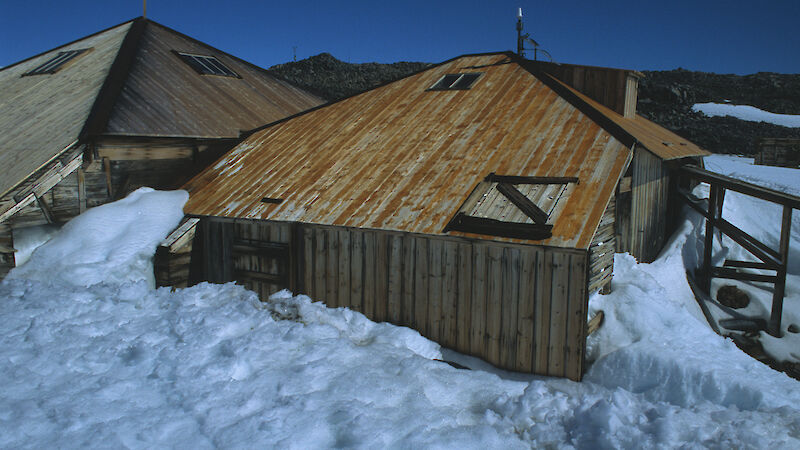Federal Environment and Heritage Minister Peter Garrett today announced over $1.2 million for conservation of Antarctic heritage, and scientific research.
”$486,000 in funding for the historic Mawson’s Hut at Cape Denison in the Australian Antarctic Territory will include removing ice and snow from the interior of the huts and recovering and cataloguing historic artifacts from Mawson’s expedition,” Mr Garrett said.
“Sir Douglas Mawson’s incredible pioneering spirit and courage is epitomised in the wooden huts that still stand in the harsh environment of Antarctica,” Mr Garrett said.
“Built between 1912 and 1913, these National Heritage-listed huts need urgent conservation to ensure their long-term survival. This is one of Australia’s most important historic sites as it was from here that Mawson’s team studied weather, geology and magnetics on the Antarctic continent, enriching the world’s knowledge of this remarkable area.
“With a recent growth in Antarctic tourism, sensitive site improvements will ensure that the heritage values of the site are maintained.
“Through the Australian Government’s $650 million Jobs Fund initiative I'm pleased to say we envisage that nine short-term and two long-term jobs will come out of the project, and provide a great boost to the work of the Mawson's Huts Foundation."
“The $60 million allocated from the Jobs Fund for community heritage projects is the largest investment ever made in Australian heritage conservation. It recognises the crucial role that heritage conservation can and does play in stimulating the economic health of communities and in turn, the nation," Mr Garrett said.
The $60 million for community heritage projects has been developed in consultation with Senator Bob Brown as part of the Australian Government’s Jobs and Training Compact.
The Minister also announced the allocation of more than $750,000 to support Australia’s Antarctic program, with projects to be undertaken by institutions around the country in the 2009/10 season.
Thirty five projects from 16 institutions will benefit from the latest round of Australian Antarctic Science (AAS) grants.
“Australia plays a major role in Antarctic and Southern Ocean research and is a key contributor to the development of policy on a range of matters, including sustainable fisheries and conservation in the region,” Mr Garrett said.
“These grants enable scientists from Australian universities and other research bodies to continue to contribute to our knowledge of the role of Antarctica and the Southern Ocean in the global climate system.
“We know that the Antarctic region influences the climate and ecology of our entire planet. If we are to know how complex ecosystems are reacting to change in these extreme environments, it is crucial that we develop a deeper understanding of the processes,” Mr Garrett said.
Projects receiving support for the 2009/10 season include:
- Ice-core studies looking at the history of climate variability in the Southern Ocean dating back 300 years.
- Impact of increased ocean acidification on the survival of near-shore invertebrates in Antarctica.
- Tracking of elephant seals to determine the impact on predators of changing sea-ice patterns in Antarctica.
- Investigation of the relationship between Southern Ocean cyclones and sea ice.
- Assessing ecological risks from oil products used in Antarctica, particularly focusing on the toxicity on sensitive early life stages of Antarctic marine invertebrates.
- Looking at the evolution of the venomous Antarctic marine animals.
- Understanding the evolution and diversity of Australian Antarctic sea spiders.
The AAS grants scheme assists researchers at agencies such as universities and museums to undertake research of high scientific merit which will make a valuable contribution to Australia’s Antarctic Science program.

